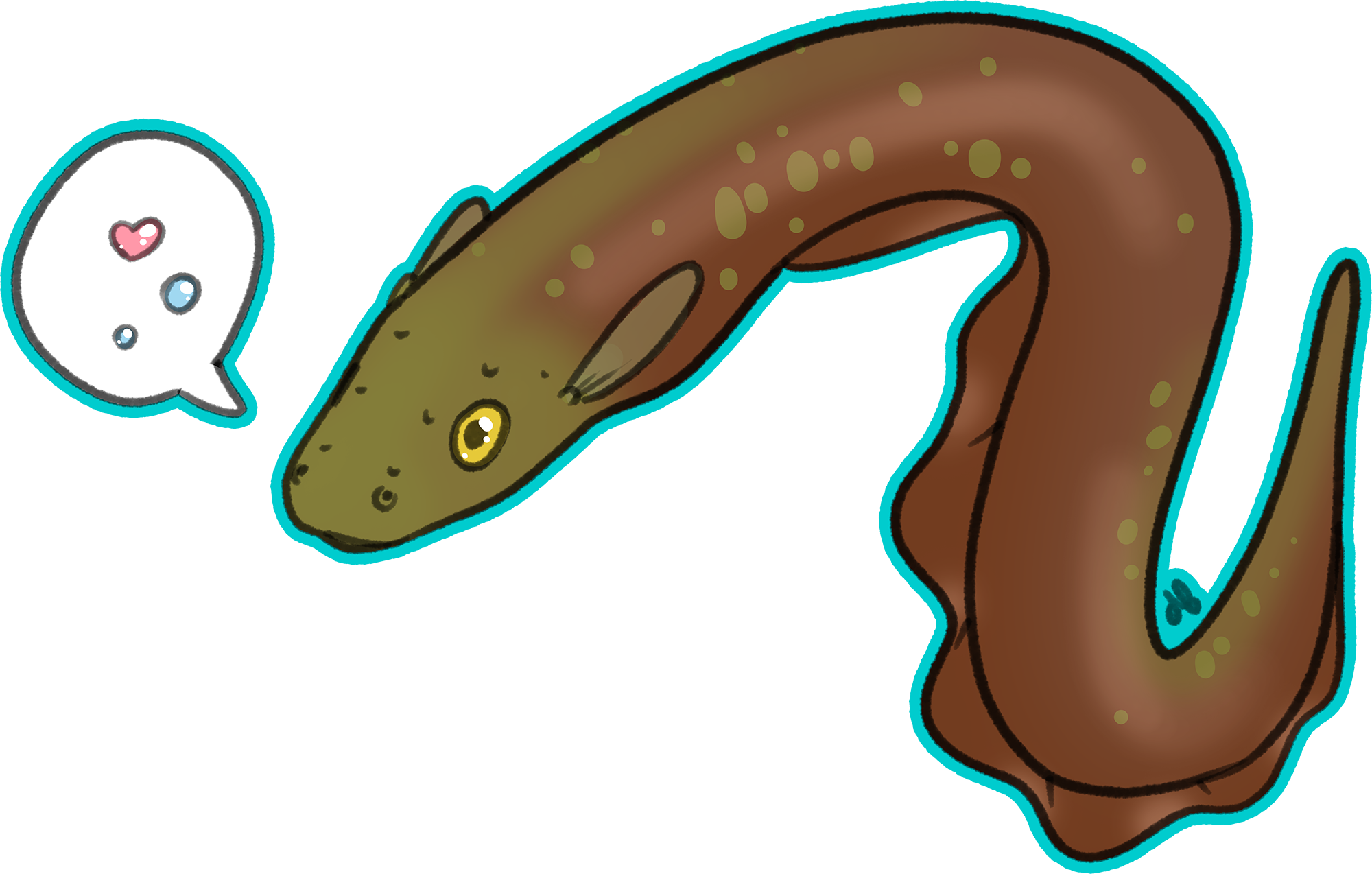Electrophorus Voltai
For the past two and a half centuries on Planet Earth, it was believed that only one species of electric eel existed in its genus. However, in the year 2019, two new species were discovered, tripling the number of species in the genus. One of these new species is known as Electrophorus voltai.
Electrophorus voltai, or E. voltai, is the strongest bioelectric generator on the planet. It can grow up to 8 feet long, has a depressed skull, and a wider head than the other two eels in its species. However, these differences pale in comparison to the spike in voltage that we see within these eels. E. voltai can discharge up to 860 volts, the highest known discharge of any living animal and 210 volts higher than ever previously recorded.
While Electrophorus voltai resemble eels in physiology, they are actually a type of fish known as a knifefish. Their vital organs are stored in the front 20% of their body near their head, and the rest of their body houses three large organs known as the Main organ, Hunter’s organ and Sach’s organ. The difference between each organ is variance in voltage for different uses, but collectively, these organs contain hundreds of thousands of modified muscle cells known as electrocytes. Nerve fibres attach to each electrocyte on one side of the cell, but not the other. When it feels threatened or senses prey nearby, the knifefish’s nervous system sends a signal to these electrocytes which flood the cell with positively-charged sodium ions (Na+). This flow of ions creates what’s known as a potential gradient across the cells, which results in a discharge of electricity.
Electrophorus voltai live in the Amazon river which runs through the Amazon rainforest, and use electricity for various things. They use weak electricity for communication and electrolocation as a means to detect objects and “see” around their murky environment, while their higher discharges are reserved for things such as defense and for stunning, immobilizing and controlling prey. Electrophorus voltai is the first known species of electric eel to be observed hunting in packs, as it was previously thought that electric eels were exclusively solitary hunters. A group of E. voltai will work together to coordinate their movements and strength of their collective electrical discharges in order to corral and stun schools of fish, which they then consume through the mouth. In addition to fish, E. voltai also feed on fruit that fall into the water from the canopies above. The mouth of E. voltai is rich in blood vessels and is also used as a lung, gulping in air and absorbing oxygen via these blood vessels as E. voltai swims along the surface of the water.
E. voltai have no known predators. While the populations of E. voltai and the two other species in their genus are stable and their conservation status is of Least Concern, the Amazon River as well as the surrounding Amazon rainforest faces many threats to the overall health and safety of its ecosystems such as agriculture, commercial fishing, and poaching among many others such as climate change and deforestation. Brazil has gathered the support of the Global Environment Facility (GEF), the World Wildlife Fund (WWF) and the German Development Bank (KfW) to help reverse the rate of deforestation and increase the span of protected areas within the Amazon basin, which is where E. voltai’s habitat is found. These protections include supervision of the protected areas, public awareness campaigns, and public consultations with communities that help define policies for land management and occupation of said land. These communities also contribute to preventing and extinguishing forest fires in the area, and are trained in agriculture and extractive techniques for the preservation of these natural resources.
In conclusion, Electrophorus voltai is an excellent example of our continuous advancements in science, technology and overall human knowledge that can only continue to grow if we continue to conserve our rainforests.
Resources:
https://www.fishbase.se/summary/Electrophorus-voltai.html
https://www.ncbi.nlm.nih.gov/pmc/articles/PMC7863634/
https://www.si.edu/newsdesk/photos/eel-research-electrophorus-voltai
https://www.worldbank.org/en/results/2013/10/09/Brazil-protects-Amazon-increasing-size-protected-areas
Submitted By dergonfruit
for Jungle Expedition: Report
Submitted: 3 years ago ・
Last Updated: 3 years ago
